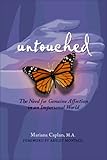
I don’t know what I was thinking, building a solar box cooker at the end of September, but, you know, sometimes it’s now or never. I think it was that slippery “tomorrow” that postponed the project for so long in the first place! So, here we go….

Here’s what you’ll need:
a fairly large workplace
a fun team
1 large cardboard box (mine was 17 ½” wide by 23 ½” high by 19” long)
1 small cardboard box (this was 14” wide by 9” high by 19 ½” long)
2-3 large sheets of cardboard (for supports, lid and reflector)
1 pane of glass (I got this at Michael’s for about $10; it was 16” by 20”)
stack of newspapers
75’ regular thickness aluminum foil (I had to buy this; it was about $4)
silicone caulking (I got this for about $4)
water soluble glue (you probably have some Elmer’s glue around the house)
old paintbrush
old cup
tape measurer
scissors
Exacto knife
vises
weights
6 twisties
1 stiff hanger
wire cutters
pliers
dowel or stick for the prop
sturdy straightedge
paint (optional)
small dark enamelware pots (I got a 4 quart roasting pan for around $10)
AND—last, but not least, you’ll need:
some time (this project took me—who is more comfortable reading about doing things more than actually doing them—three days to complete)
I tried to find as much stuff as I could around the house. The few necessities that I ended up buying cost me about $28. Not bad. I figured it was a lot cheaper than buying a solar box cooker, as well as 100% more satisfying. In addition to the “flying-by-the-seat-of-my-pants” instructions here, there are helpful resources for building all different kinds of solar cookers. Check out these great websites (some of which include instructions):
http://www.solarcookers.org/
http://en.wikipedia.org/wiki/Solar_cooking
http://www.solarhaven.org/SolarCooking.htm
http://solarcooking.org/
See if your library carries these helpful books. I used the instructions in the second one to build our cooker:
How to Make and Use a Solar Box Cooker: Easy Cooking with Sunshine by Beverly Blum
Cooking with Sunshine: The Complete Guide to Solar Cuisine with 150 Easy Sun-Cooked Recipes by Lorraine Anderson and Rick Palkovic
The last book also has recipes, but I thought I could convert recipes that could be made in a crockpot into solar cooker recipes, too. So, I also researched crockpot and slow cooker cookbooks. For its tasty sounding recipes and whole food ingredients, I particularly liked:
Not Your Mother’s Slow Cooker Cookbook by Beth Hensperger
Day One
To begin, make sure your boxes nest inside each other with enough clearance between the sides for insulation (about 2” on each side). You’ll also want your small box to contain your cooking pot with about 1” headroom. The dimensions I chose are nearly ideal; there is enough room for heat to collect, and it’s not too deep to obstruct the sun.
The boxes you choose will determine how you seal the top part, depending on if you have top flaps or not. Make sure you look through all the instructions first and imagine how you will seal off the top. Because I couldn’t find a large enough box to contain my smaller box, I had to use a REALLY tall box and lay it on its side. Then I cut out a side to form my opening, through which I’d place the smaller box. However, I was a little haphazard in my cutting and shouldn’t have been. If you need to cut boxes down, take your time to make sure all your sides are even. That way when they’re nested, the edges will meet without gaps through which air could escape. I had to go back after I foiled everything and painstakingly measure and cut the sides.
After you’ve imagined how your boxes will fit together, you can begin!
We started by creating the reflector panel. This will eventually sit on top of the cooker to channel the rays of the sun inside. To begin with, turn your large box over, set it on a large piece of extra cardboard, and trace around it. Cut it out. With your sturdy straightedge, crease one of the longer sides 1” to 2” from the edge. Set it aside to foil later.
Next, my daughter and I cut 4” squares of cardboard to raise the small inner box up off the floor of the larger box.
 Pour some glue in an old cup and mix with one part water. Now you can glue the squares together in equal stacks. We made a stack for each corner and one for the middle. You will have to determine how many you need to support your inner chamber. Set them aside to dry.
Pour some glue in an old cup and mix with one part water. Now you can glue the squares together in equal stacks. We made a stack for each corner and one for the middle. You will have to determine how many you need to support your inner chamber. Set them aside to dry.
 The next step is a little messy; try to keep your hands clean so that you don’t dull the shiny foil with glue. Good luck! Glue foil, shiny side out, onto boxes. Cover the inside and outside of the small box, and just the inside of the larger box. Overlap by at least an inch. There is no need to cover the flaps.
The next step is a little messy; try to keep your hands clean so that you don’t dull the shiny foil with glue. Good luck! Glue foil, shiny side out, onto boxes. Cover the inside and outside of the small box, and just the inside of the larger box. Overlap by at least an inch. There is no need to cover the flaps.
 Here they are, all shiny.
Here they are, all shiny.

Make your reflector shiny, too. Don’t forget to overlap your foil by an inch to make sure your heat doesn’t escape.
Now position your cardboard stacks into the bottom of the large box and glue them down.

Clean your brushes and your workspace. My cats LOVE boxes, so I needed to make sure they were covered! We then let everything dry overnight.
Woo-hoo, we’re getting warm!
Day Two
We started by creating a lid from large pieces of extra cardboard. So, if your large box didn’t come with a lid, you’ll need to make one. Again, turn your large box over, set it onto another large piece of cardboard, and trace around it. Then trace 3” to 4” around each side to make the edges. Cut out along this outer edge. Then cut a slit to the inner line at each corner. Using your trusty straightedge, crease along your line to form the edges. Now you are ready to fold them over and attach them. After you’ve overlapped a corner, use a knife or scissors to poke two holes 1” apart through the overlapping pieces. Then, thread a twisty through both holes and twist securely in front. Make sure to pull the flaps tight as you fasten each corner.
Turn your lid over, center your glass piece in it and trace around it. Then draw a line 1” INSIDE that line. Cut following your INNER line. In this way, you are making the window just slightly smaller so that the glass can be affixed and rest securely on top. However, don’t glue it yet! You’ll want to wait until after you’ve painted everything.

Now you need to see how your boxes fit together. Insert the small box into the larger one. Add or remove cardboard from stacks to bring the two box edges level.
Once your boxes are level, crumple newspaper to fill the gaps in the bottom of your box.

You’ll want to quarter your newspaper sheets and ball them up tightly. They will loosen up a little after you’ve placed them in the box.

Before you continue, you’ll need to look at your boxes together again. Can you still imagine how they will seal together? If you’re not going to use your flaps and create toppers for all sides, now is the time to cut the flaps off. I chose to use the smaller box’s longer flaps and cut the shorter ends off. Since I modified my large box, it didn’t have flaps.
Okay, now you can continue filling your walls with insulation. Center the smaller box inside and start filling it up. You may have noticed the lack of pictures that include us, but this is a sign that we were getting dirty. Our hands were black after crumpling the newspaper!

At this point, take a deep breath and take your time. You want to make sure you seal your box well. Bend the longer sides neatly over the edge of the large box and glue. You may need some vises, depending on how strong your glue is.
Look closely at my pictures to get an idea of how to create the end caps. Cut them out of excess cardboard, crease and cover what will be the inside flap in foil. Place them in their spots and make sure that they’ll seal well.

Now you can glue them inside and outside the boxes. Use vises here, as well, to hold the caps in place while they dry. We also put 2.5 pound weights on top to make sure they sealed well. Notice it’s nighttime.
If you decide to paint your cooker, now is a good time. Paint the lid and the box.

Once the paint is dry, affix your glass with the silicone caulking. This type of glue is important, as it allows the glass to expand with the heat and not break. Let dry.
Glue reflector to lid and weight.

Gettin’ warmer!
Day Three
Cut hanger, bend ends in an inch or two. I had my husband do this part; the wire was difficult to cut and made some dangerously sharp edges. If your child is going to be using the cooker, make sure and sand the wire points down. Glue one 5” strip of corrugated cardboard to the back and one to the lid of box. It needs to be your right side, as you are facing the front of the box. Use two twisties to attach your stick to the hanger as a reinforcement. When the glue is dry, you can insert the ends of the hanger into the corrugated holes and prop up the reflector, as necessary.

Put a black cookie sheet inside with an oven thermometer and set in the sun for the day to completely dry and breathe.

Notice where the sun is in your yard and play around with the reflector to maximize the light in the cooker. Where does the sun kiss your yard? This exercise gave us a chance to become more intimate with the sun, not just as a novelty, but in a survival sense.
The cooker is light enough that you can pick it up to move it when necessary. And, it was awesome! It got to 175 degrees in half an hour! We put it out at 8:45 a.m. The outside temperature was 68 degrees with a 9 mph wind. By 12:30 p.m., it was 79 degrees outside, and 250 degrees inside our cooker! It stayed there until the shade swallowed our yard. So even though today was the first day of Autumn, it isn't too late in the year for solar cooking.
Now you’re hot! You’re ready to cook. I brought our cooker in for the night to avoid deterioration from condensation. Tomorrow we’ll actually try it out!























































